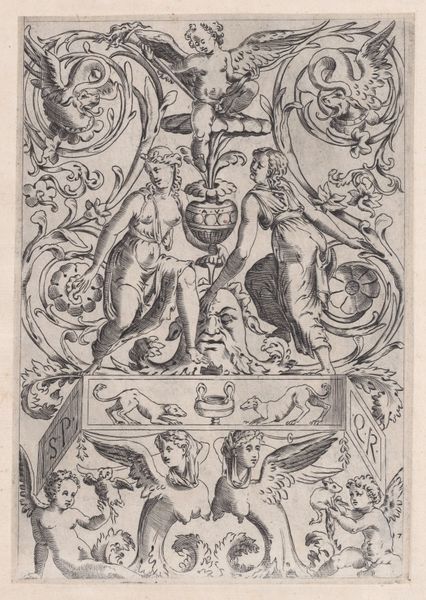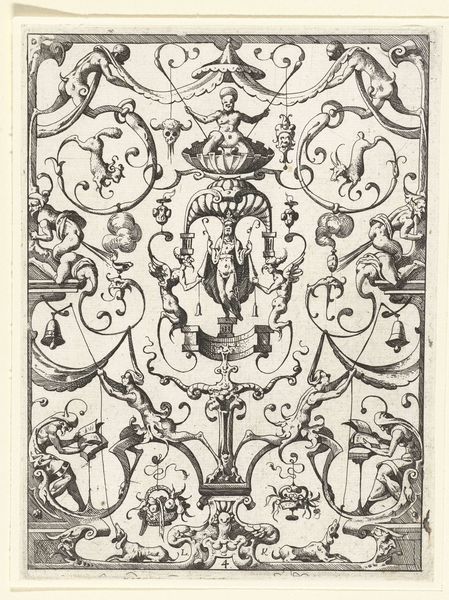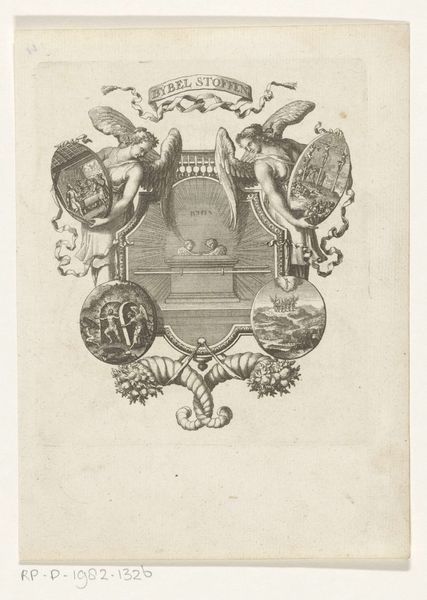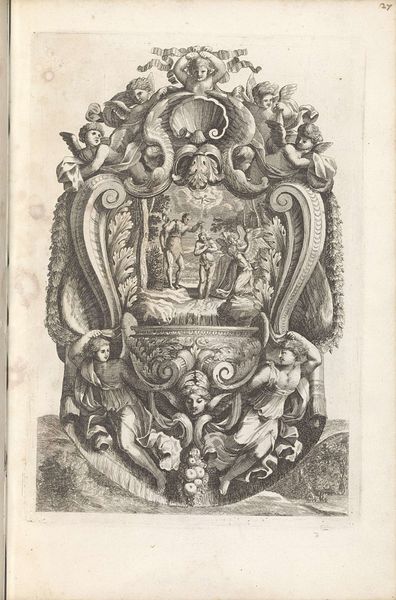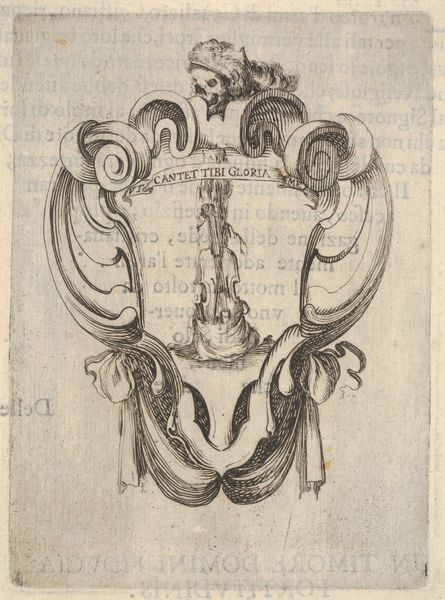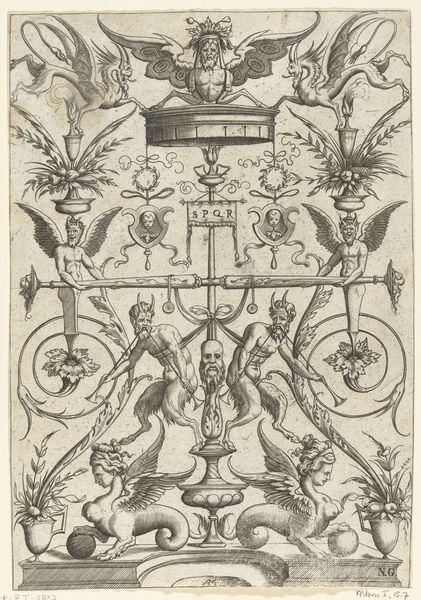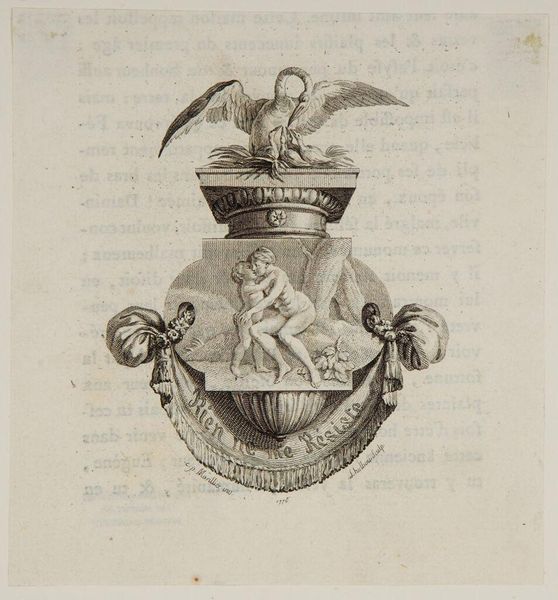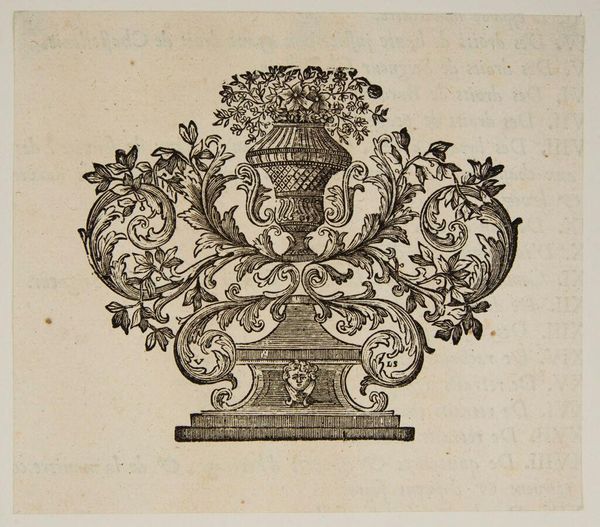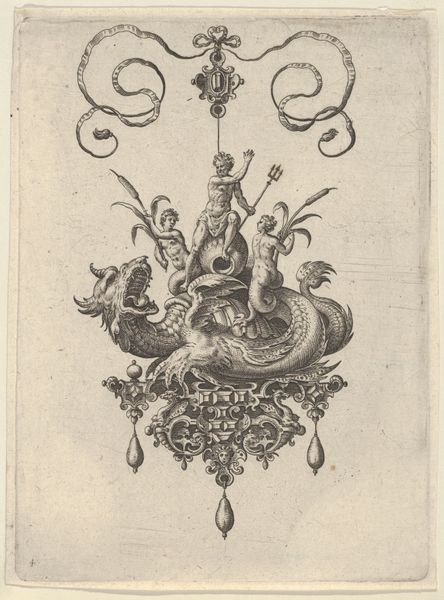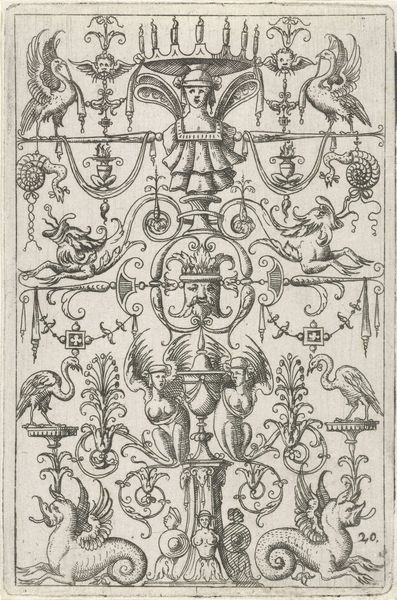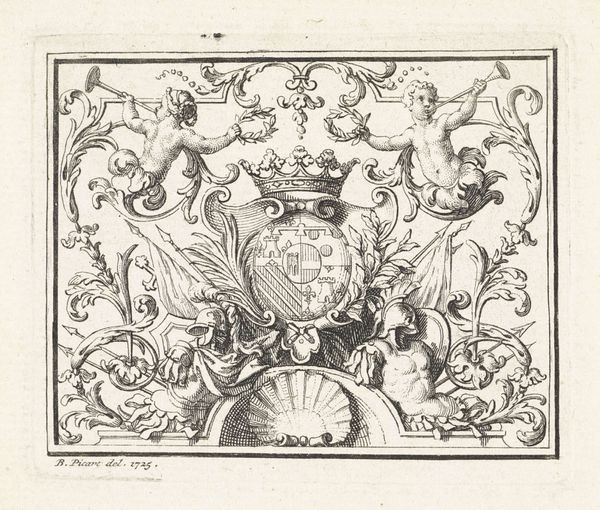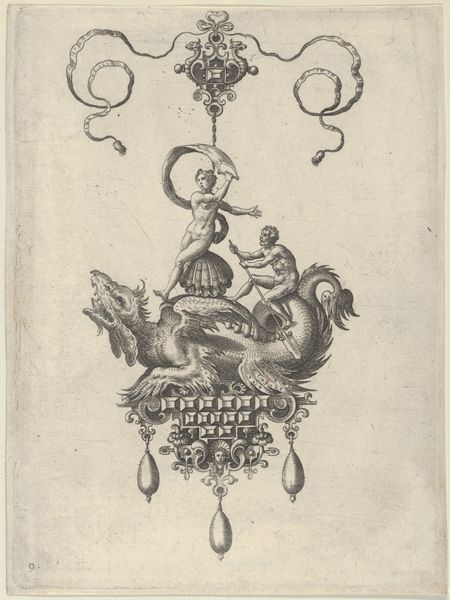
Brandend hart met pijlen in een geornamenteerd ovaal met putti en een vogel 17th century
0:00
0:00
Dimensions: height 167 mm, width 121 mm
Copyright: Rijks Museum: Open Domain
Curator: Look at this engraving, likely from the 17th century, titled "Brandend hart met pijlen in een geornamenteerd ovaal met putti en een vogel," or roughly, "Burning Heart with Arrows in an Ornamented Oval with Putti and a Bird." It is rendered with lines, attributed to an anonymous artist. Editor: It strikes me as darkly romantic, almost melodramatic. The heart, pierced by arrows and aflame, certainly suggests intense passion or perhaps even suffering. The oval frame packed with religious iconography seems both celebratory and commemorative. Curator: The symbolism here is potent. The flaming heart often represents divine love and charity. But why arrows? Editor: I think we have to dig into socio-cultural readings here, and it gets complicated: the arrows represent sacrifice, perhaps. There's definitely an exploration of the heart's subjugation through, let’s face it, some fairly macho Christian dogma here, isn’t there? What kind of political symbolism might we read out of the burning heart being pierced by masculine shafts? Curator: Perhaps. What about its composition? The heart rests on what appears to be a book – scripture perhaps – beneath it is an eagle, while winged putti float around a bishop’s mitre at the apex of the oval frame. What could that book possibly signify? Is it a marker of cultural significance or religious one? How do the other figures shape that potential argument? Editor: The book roots that passion to religious scholarship or learning – something prescribed, not an anarchic thing. The Eagle anchors us to temporal power or an empire? The eagle and mitre and little angels reinforce the notion that burning religious passion isn’t some abstract feeling but inextricably woven with cultural and political power. Curator: Agreed. It makes the artwork feel less purely devotional and more… entrenched, doesn’t it? Even if it seems religious at first glance, this is really also about institutional power and identity, visualized through these emblems and symbols. Editor: Exactly. The engraving isn't merely an expression of religious feeling. It's making an argument about authority, knowledge, and belonging, all packaged within this ornate, baroque frame. I come away now with questions of how faith intertwines with the patriarchy… food for thought! Curator: Indeed. This piece truly pushes us to reconsider the interrelation between devotion, knowledge, and social hierarchies in the art of the era.
Comments
No comments
Be the first to comment and join the conversation on the ultimate creative platform.

